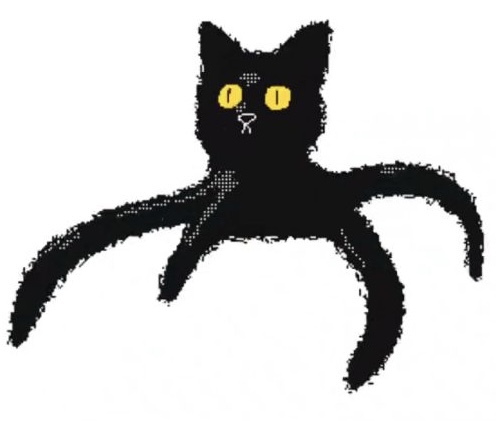Overview
In this performance workshop, we looked at different body parts– head, shoulders, chest, arms, gestures, hips, knees, and feet. Observe what emotions and body language these parts express in different states. This will be an excellent reference for next week’s walking animation exercise.
1. Feet
At first, we were asked to move around the classroom casually, without changing our posture, just paying attention to how our feet moved. Typically our heels hit the ground first. In this position, Our bodies move more steadily. Then, we started to try toes hit the ground first. This way of walking feels more graceful and elegant, like a ballerina. Then we tried to turn our toes in and out to walk. Toes in feel very insecure and unstable, and a lot of kids walk like that. Toes out feel full of confidence.
After you try it, you will find that although it may seem like a small change in foot posture, it can make a big difference to your posture and temperament.
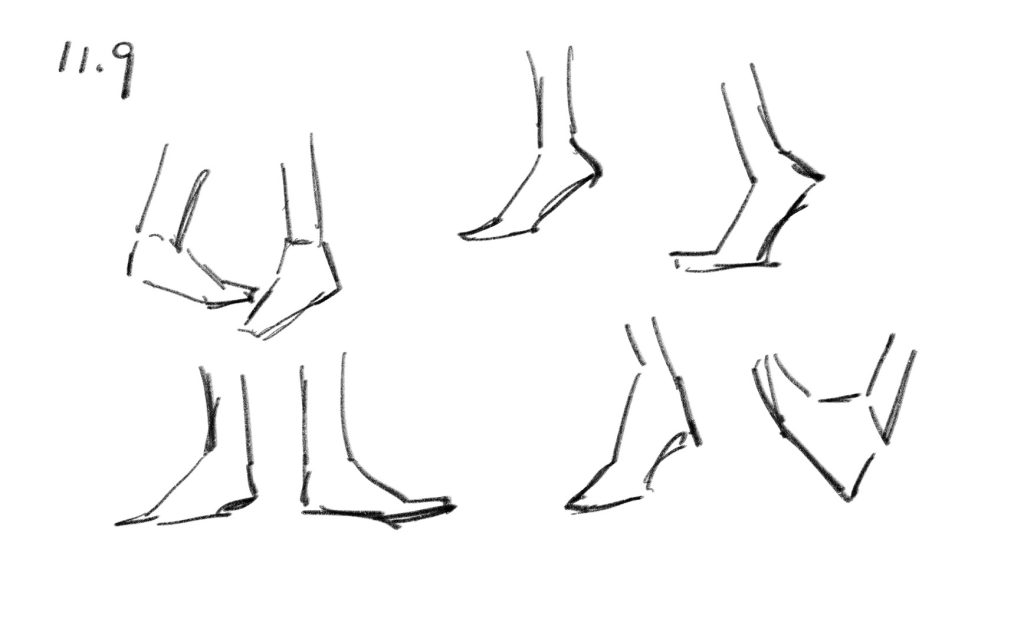
2. Knees and hips
After that, we think of the hip as a bowl, with water running out of the bowl as it tilts forward and back. Leaning forward at the hips gives a sad feeling or an old person’s posture. By contrast, the whole body opens up when the crotch is tilted back, giving a very confident impression. (eg. strong people.) While the crotch is listed to the left and right, a common posture in everyday life, it is often easier for people to stand in this position. Also, walking in this way gives the impression of a model.
Next, we try to express different emotions by changing the knee orientation. Bringing your knees in and opening them out, and stretching them forward and back are totally different sensations.
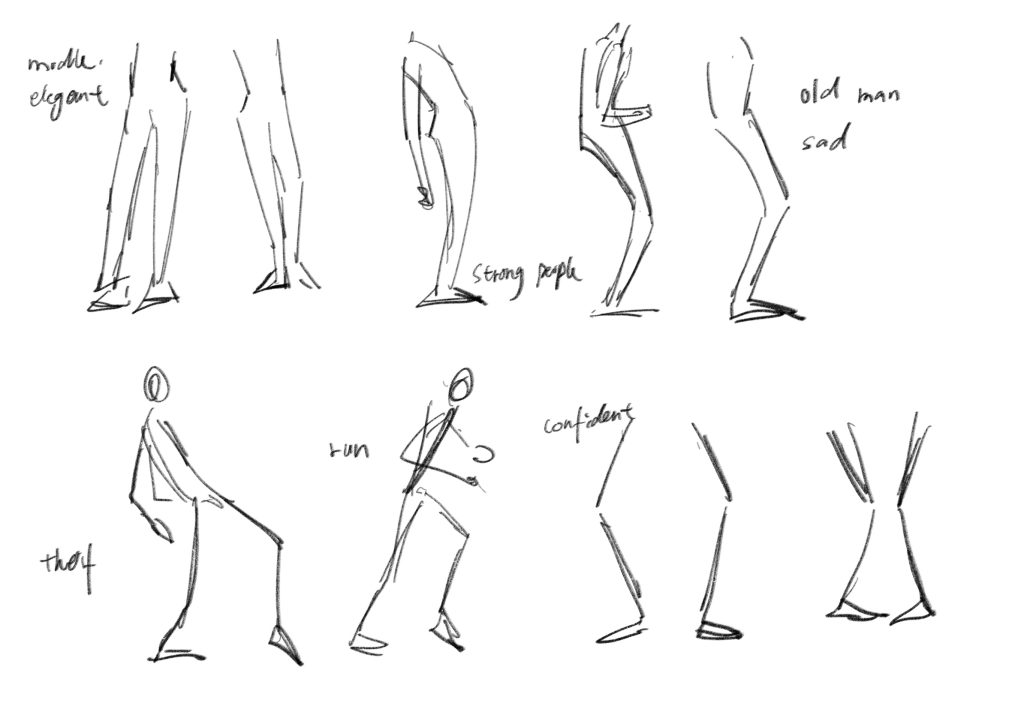
3. Chest, shoulders, arms, and head
Actually, the body parts usually move in tandem, such as the chest facing outward with the shoulders open back and the head slightly raised. Generally speaking, you can’t pull your shoulders in when your chest is facing out.
When looking at the direction of the head, you can look in the direction the nose is pointing, which is a great help to see the position of the head.
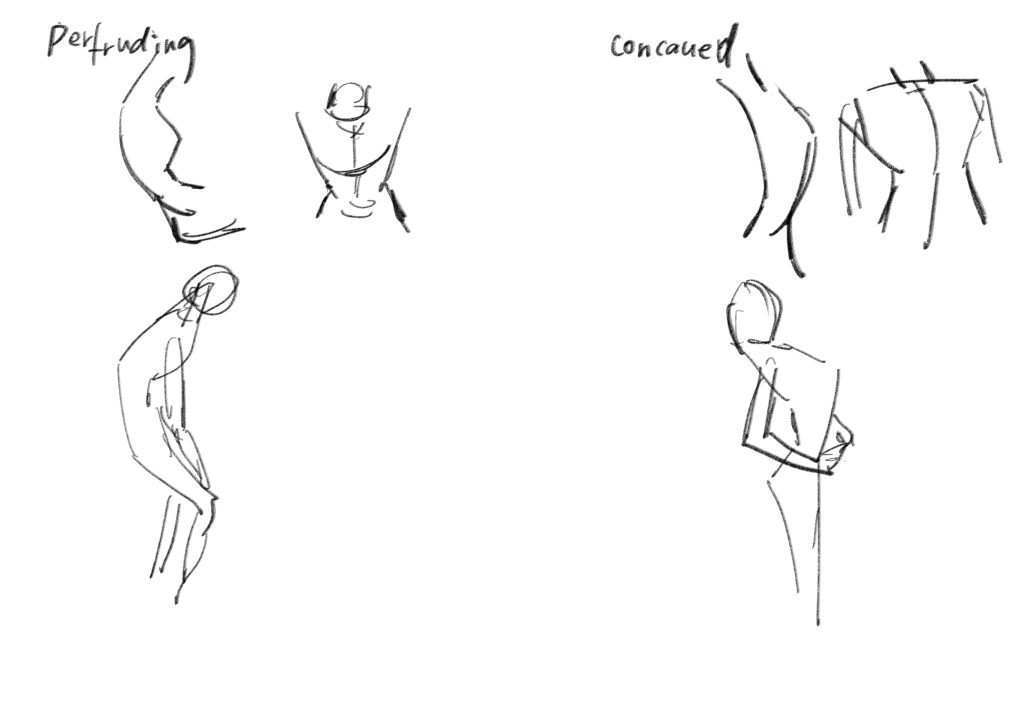
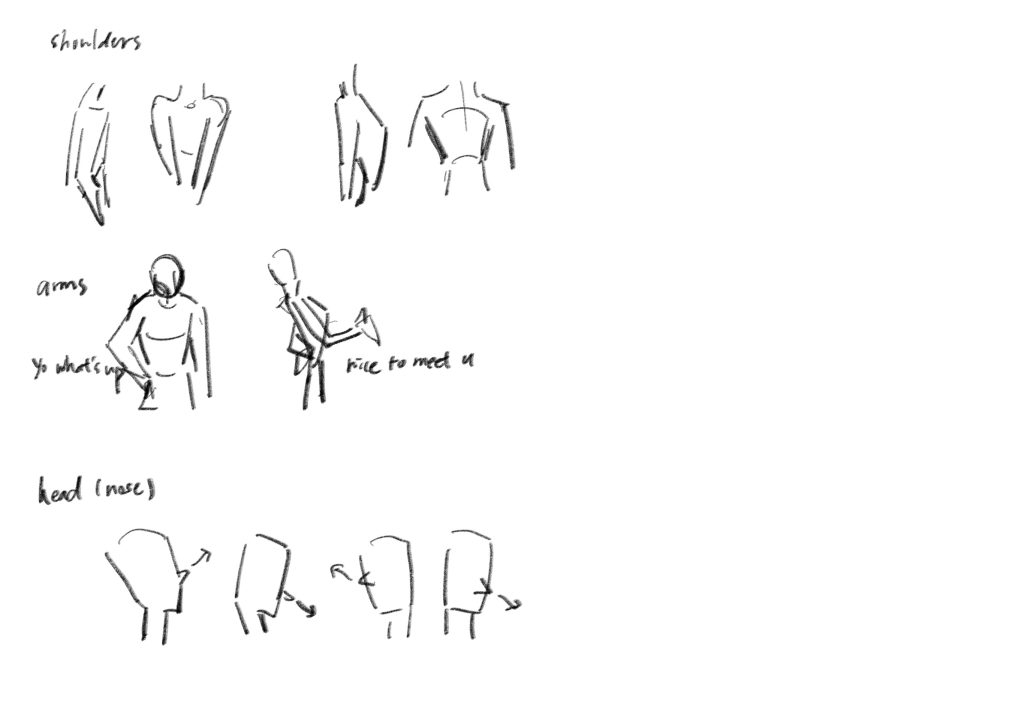
4. Gesture
Then we talked about the meanings of gestures in different countries and the cultural connotations behind them. One of the interesting things about this is that the way we gesture for numbers varies greatly from country to country! Also, sometimes you can even guess what a person is saying just by looking at the gestures they make as they speak.
Reflection
People with different personalities walk in completely different ways, which is very important to pay attention to when making animations. In ordinary life, you can also observe the walking posture of people around you, which is really helpful for making animation.
